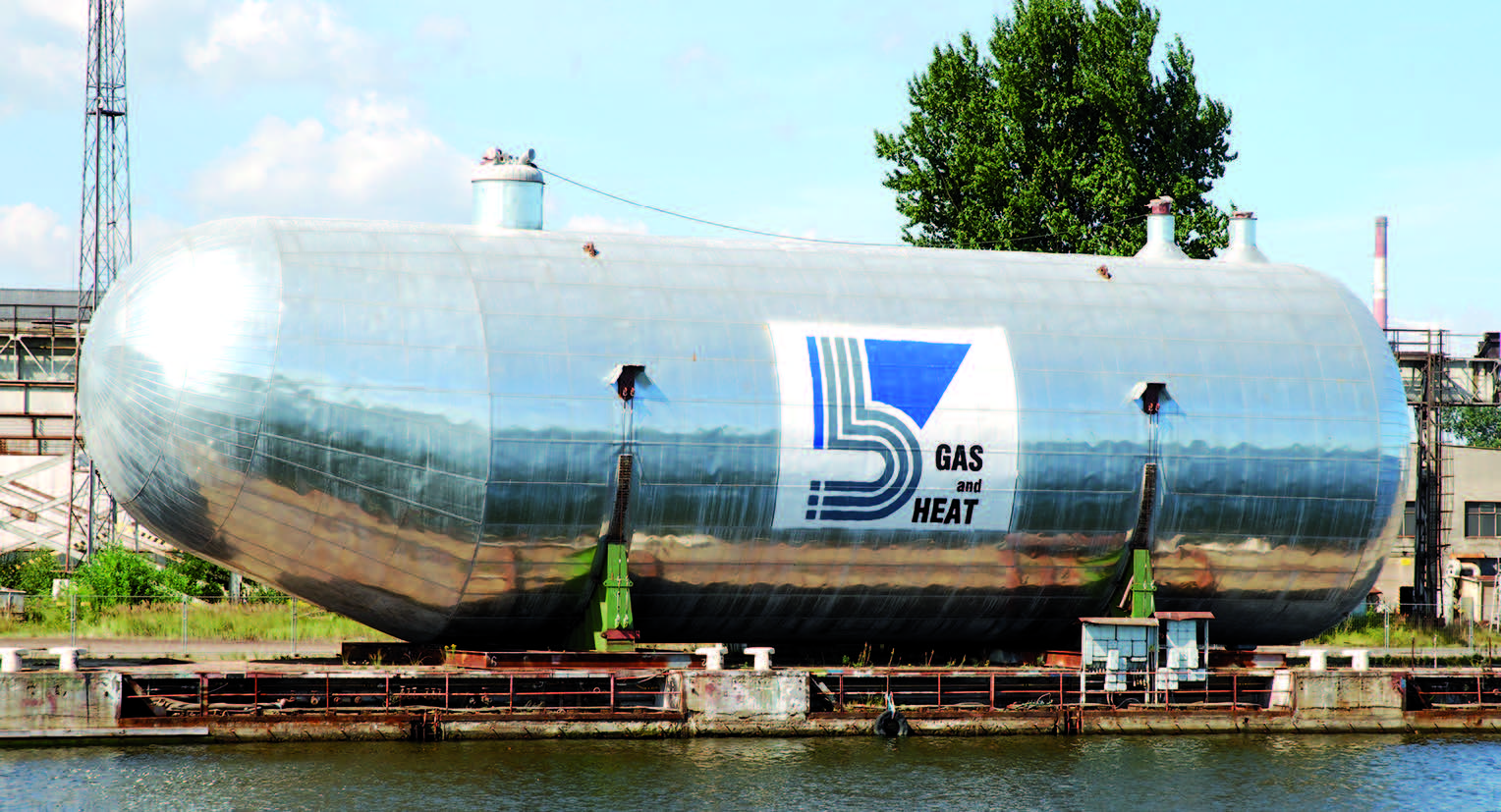

Cargo tank of gas carrier
The liquid-tight shell designed to be the prime container of the cargo and includes all such containers whether or not associated with insulation or secondary barriers or both, (IGC Code). The IGC Code categorizes cargo tanks into five main types; integral tanks, membrane tanks, semi-membrane tanks, independent tanks, and internal insulation tanks. In addition, independent tanks include a further three subcategories of tanks referred to as Type A, Type B and Type C, while internal insulation tanks include two sub-categories of Type 1 and Type 2 tanks.
- Independent tanks – Independent tanks are self-supporting; they do not form a part of the ship hull and are not essential to the hull strength. There are three categories of independent tanks: type A, type B and type C (pressure vessels).
IMO type B independent tanks were developed by Moss Rosenberg, using spherical tanks, and by Ishikawajima Heavy Industries, using self-supporting prismatic tanks. The US classification society ABS has very recently given approval in principle to a new type B cylindrical tank with spherical dished ends that has been developed by Houston-based Ocean LNG Inc.
- Integral tanks – Integral tanks form a structural part of the ship hull and are influenced in the same manner and by the same loads which stress the adjacent hull structure.
- Internal insulation tank – Internal insulation tanks are not-self-supporting and consist of thermal insulation materials which contribute to the cargo containment and are supported by the structure of the adjacent inner hull or of an independent tank. The inner surface of the insulation is exposed to the cargo.
- Membrane tank – Membrane tanks are not-self-supporting tanks which consist of a thin layer (membrane) supported through insulation by the adjacent hull structure. The membrane is designed in such a way that thermal and other expansion or contraction is compensated for without undue stressing of the membrane. Various systems were specially developed by French designers Gaz Transport and Technigaz, which merged in 1994 to create GTT. See also Membrane containment system.
- Self-supporting prismatic tank – The independent prismatic shape IMO type B (SPB) tank developed by IHI. The most recent installation was in a pair of 87 500m3 LNG carriers built in 1993 (POLAR EAGLE and ARTIC SUN). As with the Moss Rosenberg tanks, the SPB tanks are prefabricated and subsequently installed inside the inner hull as complete units. They are rectangular in shape, built of aluminium plates with a thickness of 15 to 25mm and covered with heat insulating material blocks. At the bottom of the tanks, supporting blocks made of reinforced plywood are fixed and mounted on steel supports on the double bottom structure.
Each tank has an internal centreline bulkhead and a subdividing swash bulkhead which eliminates sloshing problems experienced with partially-filled tanks. Access for inspection and maintenance to the inner hull is made easy if the vessels have a completely flat weather deck and double hull.
- Semi-membrane tank – Semi-membrane tanks are not-self-supporting tanks in the loaded condition and consist of a layer. Parts of the layer are supported through insulation by the adjacent hull structure, whereas the rounded parts of this layer connecting the above-mentioned supported parts are designed also to accommodate the thermal and other expansion or contraction.
